We greatly hope that you, our readers, will truly enjoy and appreciate reading this article about these 7 Spectacular Species of the Seychelles. It’s also our fervent hope that you will find it of great interest, as well. May it both educate and edify you in equal measure.
Certainly, however, these few species listed herein represent only the tiniest percentage of the awesome variety of life to be found here. We sincerely believe, though, that those selected for inclusion here serve as excellent representatives of the variety of life here.
Nepenthes pervillei
Nepenthes pervillei Facts
- Leading off this article about these 7 Spectacular Species of the Seychelles we present the marvel of evolution known simply as the Nepenthes pervillei.
- This remarkable, as well as extremely distinctive, plant bears a relatively cumbersome formal scientific name. Unfortunately, for the moment, this fascinating creation of Nature has no generally accepted common name, however.
- The first, formal recognition of the intriguing plant as a separate and distinct species took place in the year 1852. The respected German-Dutch botanist, Charles Ludwig de Blume further holds the distinction of this scientifically noteworthy accomplishment.
- Subsequently, though, later research eventually moved the unique plant to another genus, renaming it as Anurosperma pervillei. To confuse the issue even more, however, still later studies placed it back into its original genus, and restored the original name.
- Such shuffling happens occasionally, coming as no surprise to those who follow the field. That’s due to the fact that newer research, utilizing improved scientific tools and knowledge frequently alter our understanding and knowledge of the world around us.
- Fortunately for it, the remarkable work of evolution appears to have a population base that’s both sizeable and stable. This also appears to hold true throughout the entirety of its admittedly small range. The IUCN, therefore, currently lists it as Least Concern.
- The Nepenthes pervillei nevertheless must be considered to facing at least some threats to its continued existence, as most species do. Habitat loss forms a very real potential danger, of course. Its greatest threat, though, likely consists of climate change.
Nepenthes pervillei Physical Description
Although the marvelous Nepenthes pervillei never fails to dazzle and impress those fortunate to encounter it, the plant doesn’t do so due to sheer size. That’s because it remains a physically small specimen. That holds especially true due to some of its relatives.
The plant nonetheless holds its own brand of visual appeal for those who appreciate the variety of Nature. This botanical wonder evolved as a varity of pitcher plant. Due to shared genetic traits, the trap develops as strongly vertical in construction.
The trap further attains a normal maximum height of roughly 5.5 in (14 cm). This structure also tends to remain quite slender. Typically this has an average diamter of only about 1.2 in (3 cm). This further sits atop a slim stem that averages about 2 in (5 cm).
Each of these plants also manifests numerous short leaves, with a rounded tip. These further tend to vary signicantly in length, from individual to individual. As a general principle, however, this foliage attains roughly the same length as the trap does height.
Intriguingly, the coloring of the Nepenthes pervillei changes over time. Younger plants tend to display a predominantly reddish-brown hue, along with an external covering of fine hairs. Mature specimens, though, tend to progress from greenish-yellow to purple shades.
- Kingdom: Plantae
- Phylum: Angiosperms
- Class: Eudicots
- Order: Caryophyllales
- Family: Nepentheceae
- Genus: Nepenthes
- Species: N. pervillei
Nepenthes pervillei Distribution, Habitat, and Ecology
Quite sadly, the magnificent Nepenthes pervillei appears to possess and extremely limited range of habitation. That range is also severely restricted, complicating its chances of long term survival. Fortunately, though, it’s native region’s extremely lush overall.
That’s because it evolved as native to a very small, specific portion of the Indian Ocean. More precisely, to the knowledge of researchers, it only lives in the Seychelles. Even within that region, however, it only appears on the islands of Mahé and Silhouette.
Presently, no evidence exists that it ever spread beyond this limited range. Within that very specific range, it also displays decidedly strong, and prohibitive habitat requirements. To begin with, all known specimens make their home on or near mountain summits.
Not only that, however, those mountain summits, already few in number on the islands, must also be primarily composed of granite in their structure. There, the roots of this unique botanical marvel struggle valiantly to reach deep into small cracks and crevices.
Altitude also seems to play a vital role in its requirements for survival. Due to that, all known plants live at altitudes ranging from 1,148 – 2,460 ft (350 – 750 m) above sea level. The precise evolutionary reason for such specific requirements, however, is a mystery.
The soil in such locations obviously remains extremely poor in vital nutrients, though. Being carnivorous in nature, the Nepenthes pervillei therefore supplements its nutritional needs by consuming live prey. These vary, of course, but ants comprise the majority of its diet.
Seychelles Sheath-Tailed Bat
Seychelles Sheath-Tailed Bat Facts
- Next up among these choices for this listing of 7 Spectacular Species of the Seychelles we give you the Seychelles Sheath-Tailed Bat.
- Clearly, the distinctly fascinating, albeit comparatively small, flying mammal elegantly proves that physical size remains irrelevant. Sadly, the amazing animal also currently officially ranks as one of the rarest creatures known to science.
- Bats of all kinds, further classify as mammals placed within the Family Chiroptera. These truly remarkable creatures also hold a very special and distinct scientific status. The group still remains the only known mammals capable of true flight.
- Its common name also derives from a particularly unique physical characteristic of the tantalizing species. That’s because of the remarkable presence of a small membrane extending between the hind legs that can be placed over the tail.
- Most unfortunately, this extremely interesting species now only inhabits a severely restricted habitat range. Its original range, though, still remains undetermined. This lamentable statistic makes the fascinating animal extremely vulnerable.
- In the modern era, the greatest threats to the continued existence of the Seychelles Sheath-Tailed Bat as a species appear to be comprised of three factors. First comes continued loss of habitat to the planting of coconut plantations.
- Next is the presence in its range of invasive species. Finally, however, would be climate change. Experts place its numbers at fewer than 100 remaining individuals. The IUCN appropriately currently lists the harassed creature as Critically Endangered.
Seychelles Sheath-Tailed Bat Physical Description
Uniquely, the extremely rare and highly threatened Seychelles Sheath-Tailed Bat stands out for several reasons. Some of them include factors other than sheer size. That holds true since the animal evolved as a comparatively diminutive member of its order.
In point of fact, an average head and body length for this specific species remains slight. This actually only totals between 2.1 – 2.5 in (55 – 65 mm). This tiny yet impressive mammal does share one particular characteristic with many of its related species, however.
This occurs given that fact that the mammal displays a slight degree of the trait of sexual dimorphism. In its case, though, this occurs in the species in regards to weight. Males typically weigh about 10% less than the slightly thick-bodied females.
The fantastic Seychelles Sheath-Tailed Bat displays a dramatic pattern. This pattern consists of a deep reddish-brown to almost black, that predominates on the wings and back of the body. The underside of the body presents shades of gray or lighter shades of brown.
- Kingdom: Animalia
- Phylum: Chordata
- Class: Mammalia
- Order: Chiroptera
- Family: Emballonuridae
- Genus: Coleura
- Species: C. seychellensis
Seychelles Sheath-Tailed Bat Distribution, Habitat, and Ecology
Lamentably, the seriously imperiled Seychelles Sheath-Tailed Bat has potentially lost much of its original range. It now exists only in a tiny part of the world. More precisely, this consists of the Seychelles Islands, north of Madagascar in the Indian Ocean, near Africa.
Many scientists theorize that it also once existed in great numbers in the region. Now, however, it apparently only exists in a few limited locations, with specific conditions. This species also generally roosts in small caves and the cracks and crevices of rock faces.
It additionally differs from most types of bats in a striking manner. The great majority of bats typically roost in enormous groupings. This animal, however, forms harem colonies. These generally comprise a total of only 1 or 2 males, with multiple females.
Quite sadly, even more than most other endangered species, it appears to be especially vulnerable to habitat deterioration due to the influx of non-native plant species. This occurs since many of the native insect species cannot feed upon these invasive species of plants.
Its own numbers have therefore greatly decreased. This, in turn, has the obvious effect of significantly reducing the available food source for the Seychelles Sheath-Tailed Bat. But this affects it more than others since the species has an entirely insectivorous diet.
Gray’s Leaf Insect Facts
- The third entry into this compilation of these 7 Spectacular Species of the Seychelles is the only insect on the list, the Gray’s Leaf Insect.
- This intriguing product of natural evolution most frequently goes by the somewhat informative common name for excellent reasons. It also has another, less frequently used common name. That’s the equally informative term of the Java Leaf Insect.
- Professional entomologists, though, typically refer to the species by its formal scientific name. That, however, is the tongue-twisting term of Pulchriphyllium bioculatum. Regardless of the term used to refer to it, the insect remains a fascinating one.
- The first formal recognition of the arthropod as a separate and distinct species, furthermore, occurred in the year 1832. This took place as a result of the work of George Robert Gray, the highly respected English zoologist, and part of the British Museum.
- This particular small but nonetheless impressive animal also represented a personal milestone for the eminent researcher. That’s because the creature also represented the first phasmid he discovered. He later went on to discover many more, however.
- For the moment, the IUCN has no listing for the Gray’s Leaf Insect on its Red List of Threatened Species. That’s due to the fact that, for the moment, at least, it appears to be maintaining a population base that’s both sizeable and sufficient within its range.
- The amazing insect must nevertheless be considered to be facing at least some threats to its continued existence. Given the nature and location of its range, habitat loss poses a potential danger. Its greatest threat, however, likely consists of climate change.
Gray’s Leaf Insect Physical Description
It’s worth noting that, while the Gray’s Leaf Insect does impress those who encounter it, the creature does not do so due to sheer size. That’s due to the fact that it also ranks as a moderately-sized member of its Order. It’s nonetheless a respectable specimen.
Like many insects, it also displays a moderate degree of the physiological characteristic of sexual dimorphism. In its specific case, though, this trait mainfests itself in terms of simple physical size. Specifically, females attain a shorter length, though, thicker body.
More precisely, males attain an average overall length of roughly 2.6 – 3.7 in (6.6 – 9.4 cm). The shorter females, though, only grow to an average length of 1.8 – 2.7 in (4.6 – 6.9 cm). Females of the species also develop an abdomen that remains narrower at the base.
Both genders, however, manifest the same general color pattern. Both the body and the legs display a primarily green background, though shades vary. Random markings consisting of such hues as orange and yellow also manifest, varying between individuals of either gender.
Females of the Gray’s Leaf Insect further distinguish themselves from their male counterparts in yet another manner. Males typically possess significantly longer antennae than the females. Males, furthermore, have fully functioning wings, while females do not.
- Kingdom: Animalia
- Phylum: Arthropoda
- Class: Insecta
- Order: Phasmatodea
- Family: Phylliidae
- Genus: Pulchriphyllium
- Species: P. bioculatum
Gray’s Leaf Insect Distribution, Habitat, and Ecology
Fortunately, both for the Gray’s Leaf Insect, and those of us who appreciate Nature, the marvelous insect appears to inhabit a relatively large swathe of the globe. That’s due to the fact that its known habitat range covers a quite respectable portion of southeastern Asia.
It does, however, also appear in several other regions of the world. These consist of the Seychelles, Mauritius, and Madagascar. In its main area, though, it seems widespread throughout such countries as India, Sri Lanka, China, Borneo, Java, and Malaysia.
In whatever region one encounters it, though, it displays a strong preference in terms of its choice of habitat. The vast majority of individuals live in tropical regions. There, the arthropod mostly makes its home in sections of the locally abundant tropical rainforests.
It evolved as highly dependant on specific environmental conditions. These include warmer temperatures, between 75 – 82 F24 – 28 C). The species further requires moderately high humdity levels, not surprisingly, given the region in which the insect evolved.
Like most of its relatives, the Gray’s Leaf Insect further evolved as a strict herbivore. Wherever it lives, it adapts to the locally prevalent vegetation. It does, however, display certain strong preferences in its diet. These include such foods as guava and mango.
During breeding season, the females lays approximately 100 eggs. She lays these, however, over a period of several days. She also lays eggs with or without fertilization, in a process called parthenogenesis. Those laid without fertilization invariably produce females.
Aldabra Giant Tortoise
Aldabra Giant Tortoise Facts
- Appearing next in this compendiumof 7 Spectacular Species of the Seychelles we present the sole reptilian species, the Aldabra Giant Tortoise.
- Somewhat impressively, this amazing reptilian masterpiece of evolution most frequently goes this informative common name. Unlike many species, of all kinds, around the world, for now no other generally accepted alternate to this term exists.
- Scientific professionals, such as researchers, however, typically use the technical term when referring to the animal. That term, though, is somewhat difficult for laymen to pronounce. That’s because it bears the formal name of the Aldabrachelys gigantea.
- It received that moniker due to the efforts of August Friedrich Schweigger. The respected German naturalist recorded the first official recognition of the creature as a separate and distinct species. This scientifically noteworthy deed took place in 1812.
- Regardless of the term one chooses to use for it, though, it remains a remarkable product of Nature. It also stands out from its peers for an impressive reason. That’s due to the fact that it presently ranks as one of the largest known tortoises in the world.
- For the moment, the population of the Aldabra Giant Tortoise appears to be stable. That fortunate situation also seems to hold true throughout the entirety of its natural range. Despite this, however, the IUCN currently lists it as Vulnerable on its Red List.
- That status exists due to a combination of factors. The extent of its range limits its possibilities, for one. Other possible threats include habitat loss due to human expansion. Its greatest threat, though, may come in the form of ongoing climate change.
Aldabra Giant Tortoise Physical Description
To be certain, its sheer size isn’t the only impressive thing about the fabulous Aldabra Giant Tortoise. Nonetheless, as its very name implies, that aspect of its nature certainly merits appreciation. In the case of this specific tortoise, though, Nature took things up a notch.
Like many of its relatives, however, the animal also displays a moderate degree of the physiological characteristic of sexual dimorphism. In its specific case, this trait manifests itself in terms of sheer size. More specifically, females attain a smaller average size.
The carapace of most males attains an astounding average length of roughly 48 in (122 cm). An average weight, furthermore, equals approximately 550 lbs (250 kg)! Exceptional individual specimens do occur occasionally, of course, reaching even greater sizes.
Females of the species, meanwhile, reach an average length only about 36 in (91 cm). Their average weight also naturally remains less. This gender attains a typical weight equalling roughly 351 lbs (159 kg). Both genders reach smaller measurements in captivity.
Otherwise, the two genders of the intriguing Aldabra Giant Tortoise appear virtually indistinguishable in appearance. The carapace additionally generally presents as tan or brownish in color. The shell of the reptile also often manifests a highly domed shape.
Meanwhile, its powerful legs develop as relatively stocky in construction. These also have a heavily scaled outer covering. Its the neck that stands out the most, perhaps, though. This develops as more elongated in relation to body size than most of its many kindred.
- Kingdom: Animalia
- Phylum: Chordata
- Class: Reptilia
- Order: Testudines
- Family: Testudinidae
- Genus: Aldabrachelys
- Species: A. gigantea
Aldabra Giant Tortoise Distribution, Habitat, and Ecology
Unfortunately, the magnificent Aldabra Giant Tortoise possesses an extremely limited natural habitat range. As the name implies, though, that includes the Aldabra Atoll. This collection of islands forms part of the larger Seychelles group, in the Indian Ocean.
Regrettably, the majority of their natural population appears in that one restricted area. A few other, naturally occurring groupings also exist, however. These much smaller colonies appear in a National Park, on Moyenne Island, and the island of La Digue.
Yet another, albeit extremely tiny population, appears natively in one more area. That tiny grouping lives on the islet of Changuu, located near Zanzibar. This location, though, only covers about 46 acres (18.6 ha). Small captive populations also exist, in a few parks.
Thankfully, though, within those limited zones of habitation, their nature serves them well. That’s because they evolved as highly adaptible. Due to this ability, individuals and groups appear in such diverse areas as scrub, grasslands, mangrove forests, and coastal dunes.
The impressive Aldabra Giant Tortoise evolved as primarily herbivorous. Its principal source of nourishment consists of local woody plant stems, leaves, and grasses. Individuals occasionally consume small quantities of invertebrates and carrion, including dead tortoises.
Locally available fruit also serves as a source of nourishment. The long neck allows them to feed on objects as much as 3.3 ft (1 m) above the ground. Specimens may live either solitary lives, or as part of small groups. Maximum lifespan is thought to exceed 200 years!
Jellyfish Tree
Jellyfish Tree Facts
- The next species making an appearance in this article about 7 Spectacular Species of the Seychelles is the remarkable Jellyfish Tree.
- The highly evocative term for this flora serves as the most frequently used common name for an extremely unusual type of tree. Its official scientific name, however, remains that of the all but unpronounceable Medusagyne oppositifolia.
- Regardless of which of these particular terms one chooses to use for it, this remarkable flora stands out for a most unfortunate reason. In point of fact, this fascinating tree currently ranks as one of the rarest known species of tree on earth.
- Researchers had, in fact, previously believed this marvel of Nature to be extinct. Then, to the sincere amazement of those same researchers, a chance discovery of a handful of specimens took place in the early 1970’s, exciting botanists worldwide.
- Presently, only around 30 known specimens exist in the wild, within an incredibly tiny area. Quite understandably, the IUCN currently lists the amazing Jellyfish Tree as Critically Endangered. This status appears on the organization’s Red List.
- Since its population remains so terribly small, as well as its remaining zone of habitation, one danger it faces comes from potential habitat loss. Its greatest threat, however, may now come in the form of the ongoing effects of climate change.
Jellyfish Tree Physical Description
Although the fabulous Jellyfish Tree does impress those individuals fortunate enough to encounter it, it does not do so due to sheer size. Somewhat surprisingly to some, this highly distinctive tree only ranks as a moderate-sized variety of tree.
Exceptional specimens attain measured heights of as much as 33 ft (10 m). Most individuals, however, remain somewhat smaller than that. It also develops a thick canopy, composed of densely interlocked, slightly elongated foliage, with a dark green color.
These leaves themselves, in fact, typically reach lengths equaling around 3.1 in (8 cm), and have a thick, leathery texture. The thin trunk of the tree develops a comparatively distinctive bark, displaying a dark color, along with deep, interlocking fissures.
The tree also bears both male and female flowers which develop small in size and white in color. Like Medusa, arguably the fruit represents its most unusual aspect. Its distinctive shape truly is remarkable, since it bears a strong resemblance to a jellyfish.
The fruit of the fascinating Jellyfish Tree also merit attention and appreciation for their distinctiveness. These develop with a rounded shape, like many fruits, and displaying a bright green color. This later changes to reddish-brown as it ages.
- Kingdom: Plantae
- Phylum: Angiosperms
- Class: Eudicots
- Order: Malpighiales
- Family: Ochnaceae
- Genus: Medusagyne
- Species: M. oppositifolia
Jellyfish Tree Distribution, Habitat, and Ecology
Quite regrettably, the distinctive Jellyfish Tree only inhabits an extremely limited and restricted area of the world. For the moment, researchers have found no evidence that the marvelous plant ever existed anywhere outside of its current, tiny zone of habitation.
More precisely, the fabulous flora only appears on the tiny tropical island of Mahe. This island itself forms the main island of the Seychelles, considered as part of the continent of Africa. Even there, however, it only resides within a very tiny niche in the ecosystem.
Not only does that qualify as tiny, but the very nature of that exact habitat serves to further complicate its efforts to survive, let along to spread. In fact, all known specimens appear within 1.2 mi (2 km) of the sea, and grow in the cracks of exposed granite outcroppings.
This, understandably, appears to be severely hampering the survival efforts of the Jellyfish Tree. The few seeds produced by the surviving, mature trees, either fall on pure stone, thus having no chance to germinate, or find themselves quickly blown out to sea by the winds.
Although theories abound, one leading theory proposes that those tress alive today actually represent the outlying members of its original population. The idea is that invasive species in its original habitat, wherever that was, overtook the others.
Indo-Pacific humpback dolphin
Indo-Pacific humpback dolphin Facts
- The sixth species we selected for inclusion in this compilation of 7 Spectacular Species of the Seychelles is the Indo-Pacific humpback dolphin.
- This magnificent denizen of the oceans of the world most frequently goes by the informative common name for wholly understandable reasons. It also has another, less often used general name, however. That’s the name of the Chinese white dolphin.
- Professionals, though, such as researchers, generally refer to this masterpiece of Nature by its scientific name. That term, though, is the less than easy to pronounce name of the Sousa chinensis. Regardless of the term applied, however, it’s a remarkable creature.
- It further received that name due to the work of the respected naturalist, Pehr Osbeck. The explorer, an apostle of the legendary Carl Linnaeus himself, made the first official acknowledegement of the animal as a separate and distinct species, in the year 1765.
- Previously, researchers considered it to be a subspecies of the Indian Ocean humpback dolphin. Subsequent DNA analysis, however, disproved that belief. Yet another related but separate species has now been identified, the Australian humpback dolphin.
- Regrettably, for several reasons, the amazing Indo-Pacific humpback dolphin now finds itself facing several threats to its continued existence. The IUCN, therefore, currently lists it as Vulnerable on the organizations’ published Red List of Threatened Species.
- Habitat loss forms a real concern for this impressive animal, largely due to coastal development. Overfishing and increased marine traffic throughout its range also pose a danger to it. Its greatest threat, however, most likely consists of ongoing climate change.
Indo-Pacific humpback dolphin Physical Description
The dazzling Indo-Pacific humpback dolphin fully merits appreciation for several factors. Being a roughly average-sized member of its Family, however, sheer size isn’t among them. The remarkable creature nevertheless does deserve respect, as most of its relatives.
Also following the pattern of most of its kind where physical size is concerned, it displays a moderate degree of the physiological trait of sexual dimorphism. In its case, this characteristic manifests itself with the males attaining a slightly greater size than females.
Individually, though, this measurement varies quite significantly. That’s because mature adults range in total length from 5.9 – 9.8 ft (1.8 – 3 m). Adult weights, however, vary somewhat less. Such individuals typically range from 551 – 628 lb (250 – 285 kg).
This smaller weight-to-length ratio often results in some specimens having a more rounded form than others. Otherwise, though, the two genders appear virtually identical. The prominent hump for which it’s known, however, varies in size from region to region.
It’s the color patterns of the Indo-Pacific humpback dolphin, though, that garners the most attention. That’s due to the fact that this varies significantly between adults. These range from a dark grey to whitish or even pinkish! Many also display small dark flecks.
- Kingdom: Animalia
- Phylum: Chordata
- Class: Mammalia
- Order: Artiodactyla
- Family: Delphinidae
- Genus: Sousa
- Species: S. chinensis
Indo-Pacific humpback dolphin Distribution, Habitat, and Ecology
Intriguingly, the marvelous work of evolution known as the Indo-Pacific humpback dolphin inhabits a territorial range that’s both expansive and restrictive. It’s very name provides a clue to that zone. More precisely, overall, it lives in both the Indian and Pacific Oceans.
In the Indian Ocean, that range remains more general, with the animal living along virtually all coastlines. In its Pacific Range, though, it remains slightly more specific. There, it mainly appears along the coasts of New Guinea, continental Australia, and Southeast Asia.
Within that zone of habitation, though, it typically restricts itself to very specific areas. These consist of the relatively shallow regions. This usually consists of sections along the coasts. There, however, it often frequents bays, estuaries, coral reefs, and even river mouths.
Given its geographical range, the creature clearly prefers tropical to subtropical climates. As a general principle, the marine mammal makes its home in waters warmer than 59F (15C). The beautiful species also rarely ventures to depths greater than 82 ft (25 m).
Just as its many relatives, the Indo-Pacific humpback dolphin feeds carnivorously. It principally feds on large quantities of fish species associated with either reef or estuaries. It most commonly feeds in close proximity to the floor of the ocean, sometimes in groups.
Meanwhile, its only confirmed predators consist of various types of sharks. Given its habitat range, however, Orcas likely also prey on the amazing animal. Some individuals live a solitary life, while others live in small groups. These typically range from 10-25 in number.
Hood Coral
Hood Coral Facts
- Closing out this collection of 7 Spectacular Species of the Seychelles comes the enchanting Invertebrate known as the Hood Coral.
- The unusual name that it bears serves as one of the common names for one of the best known varieties of coral. Yet that’s not the only term it’s known by. In point of fact, it also goes by the other common name of the smooth cauliflower coral.
- Among scientists, though, it’s better known by its official name of Stylophora pistillata. But regardless of the term one chooses to use, it remains an important species in some ways. Perhaps chief among these is its frequent study by scientists.
- That relative importance to professional researchers exists because it remains highly representative of its kind. As a result of this fact, it forms an important source of information about the effects of certain factors on marine life, including corals.
- Those factors threaten the Hood Coral just as much as they do other species in the oceans. These include such factors as habitat loss and, of course, the dangers of climate change. As a result of its specific situation, the IUCN classifies it as Near Threatened.
Hood Coral Physical Description
Describing the Hood Coral presents some unique difficulties. That’s due to the remarkable fact that this creature evolved and develops in close-fitting colonies. Individuals themselves remain quite tiny, and sometimes can even be difficult to discern as separate specimens.
The colonies themselves, meanwhile, attain different sizes. But, in this particular species that growth remains comparatively small. In point of fact, most colonies never exceed an overall diameter of 12 in (30 cm). An actual average, though hard to determine, is much less.
Each colony, though, consists of numerous individuals growing close together in a distinct pattern. This consists of somewhat blunt-shaped, broad, vertical stem-like structures called branches. These typically become larger and more massive as they grow in size.
Each individual Hood Coral further produces a hard outer construction. This it produces via excretions from its own body. Within this particular species, such structures typically come in one or more of four colors. These are green, bluish, pink, and occasionally cream.
- Kingdom: Animalia
- Phylum: Cnidaria
- Class: Anthozoa
- Order: Scleractinia
- Family: Pocilloporidae
- Genus: Stylophora
- Species: S. pistillata
Hood Coral Distribution, Habitat, and Ecology
The remarkable species known as the Hood Coral has a relatively broad area of habitation, compared to related species. In point of fact, this marvel of Nature inhabits an extensive portion of both the tropical and subtropical waters of the Indo-Pacific region of the world.
This inhabited zone also covers a range that begins at one end near Madagascar. From there, it extends through east Africa, the Persian Gulf and the Red Sea. After that, it reaches onward through the Indian Ocean northern Australia, and parts of the western Pacific.
Wherever it appears throughout the entirety of its range, its pattern holds true. This fascinating marine invertebrate evolved as an important reef builder. Plus, like other coral, it inhabits shallow regions. In its case, it rarely appears at depths of more than 50 ft (15 m).
Also like its brethren, the magnificent Hood Coral reproduces via polyps. These emerge from stony cups called corallites, and form solid, elongated columns. With its tiny mouth, it most commonly feeds on zooplankton, with other tiny prey being taken on rare occasions.
This creature itself, meanwhile, often serves as home to various species, who make use of it for shelter and protection. These many species include Trapezia crabs, boring clams, gall crabs, barnacles, date mussels, damselfish, and sometimes the Christmas Tree Worm.
7 Spectacular Species of the Seychelles
We sincerely hope that you have thoroughly enjoyed reading this article about these 7 Spectacular Species of the Seychelles. It’s also our fervent hope that doing so has left you with an urge to learn more about other such marvels around the world.
Unfortunately, however, many of those magnificent species now find themselves facing serious threats to their existence. Many of those dangers stem from the actions of mankind. It’s now up to each of us to do all that we can to protect and preserve these wonders.
Check out our other articles on 7 Deceptively Dazzling Deserts, Earth’s Many Stunning Waterfalls, 7 Astounding Polar Creatures, Wonderful Wild Cats of the World
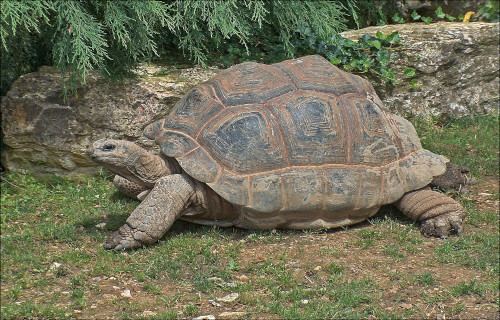
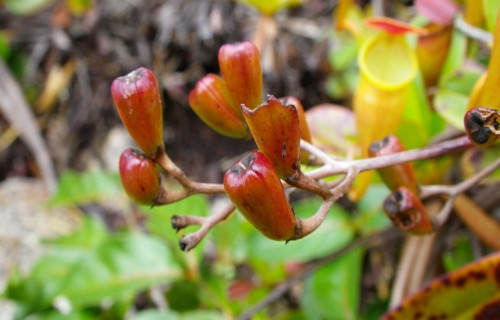
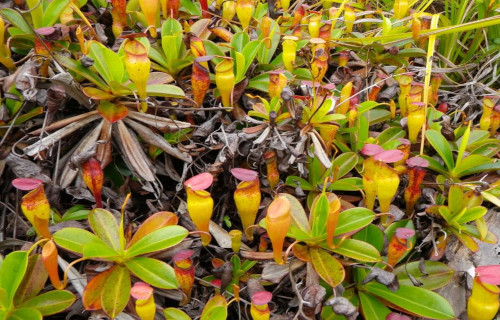
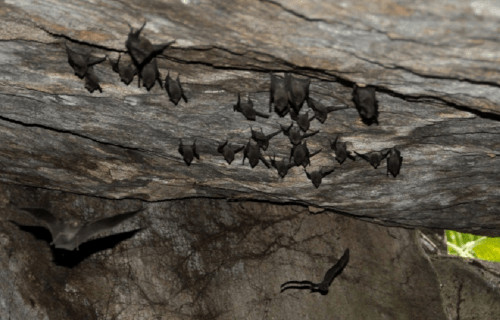
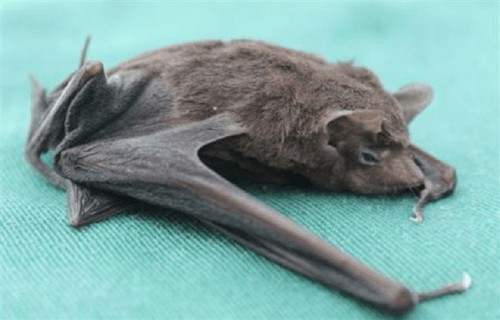
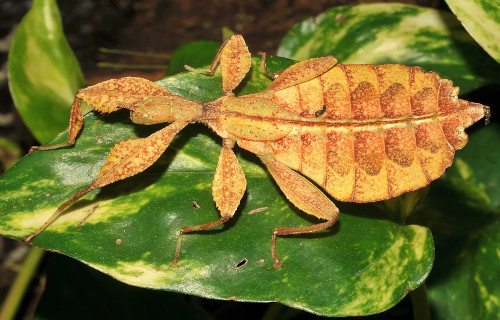
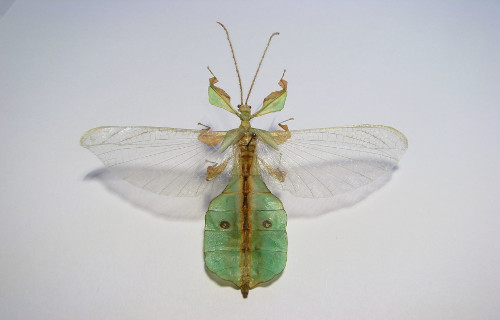
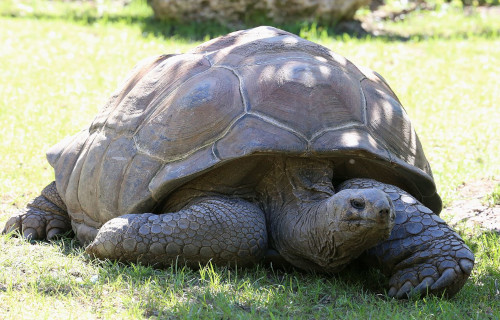
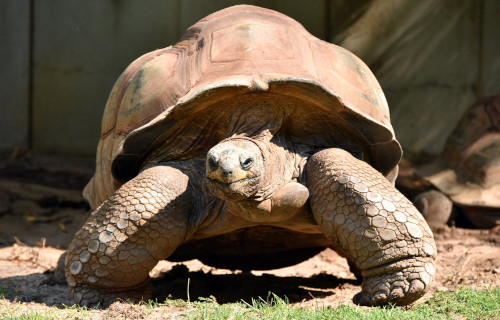
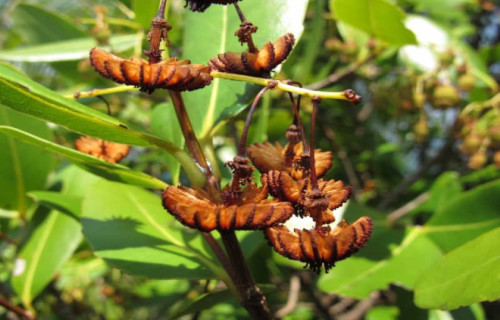
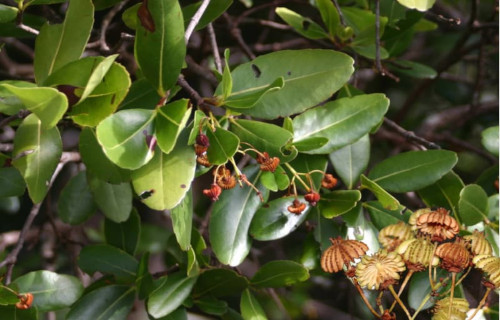
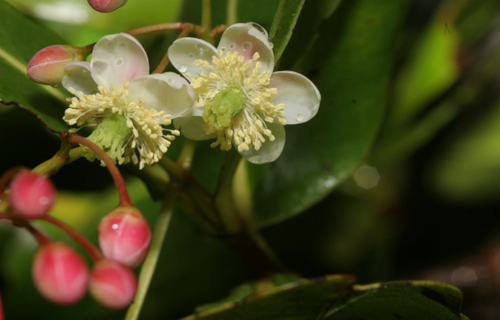
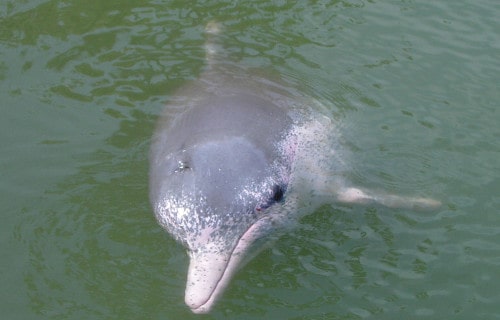
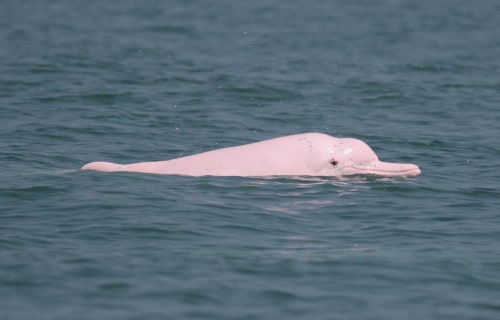
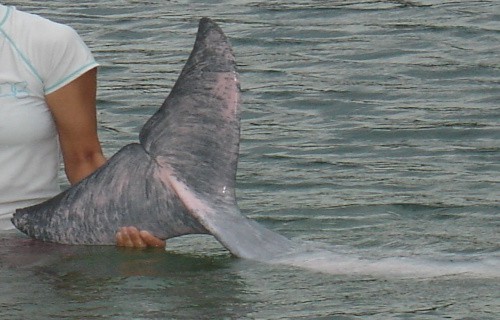
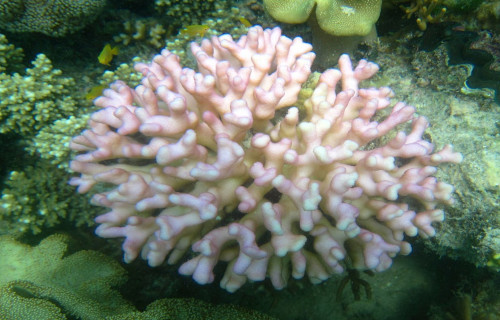
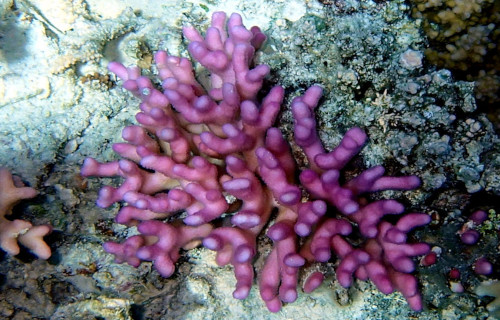
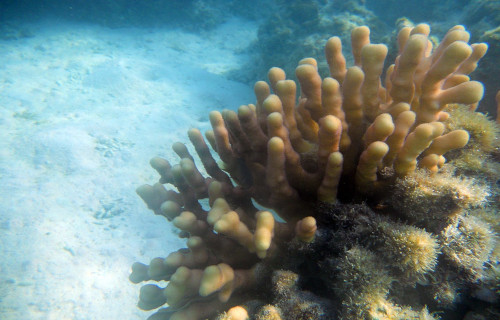









Leave a Reply